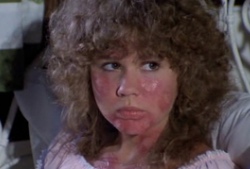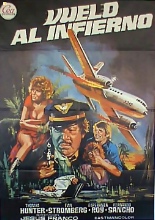
 In this film’s prologue, journalist Tom Nilson (Thomas Hunter, The Cassandra Crossing) sits at his desk to record an audio account of harrowing events he experienced in the past month, when a small passenger jet leaving Chile for Rio disappeared over the Amazon. Nilson teases that his story is “something extraordinary.” In reality, it’s a Jess Franco cheapie. And that’s not really a complaint.
In this film’s prologue, journalist Tom Nilson (Thomas Hunter, The Cassandra Crossing) sits at his desk to record an audio account of harrowing events he experienced in the past month, when a small passenger jet leaving Chile for Rio disappeared over the Amazon. Nilson teases that his story is “something extraordinary.” In reality, it’s a Jess Franco cheapie. And that’s not really a complaint.
Welcome to Utape Airlines X312 — Flight to Hell! One of the handful of passengers aboard is a big bank president (Siegfried Schürenberg, The College-Girl Murders) who’s fled his employer with millions in stolen jewels on his person — a fact not lost on the plane’s hijacker, inadvertently causing the craft to crash in the Brazilian jungle. On the ground, as the survivors attempt to make their way to safety, they’re chased by a band of revolutionaries led by Pedro, played by Franco regular Howard Vernon (Countess Perverse) in a visibly glued-on mustache that makes him look like Michael Shannon as a live-action Frito Bandito. And Utape employee Bill (Fernando Sancho, The Swamp of the Ravens) isn’t exactly making things easier on them, what with wanting the loot for himself and willing to murder to achieve that goal.
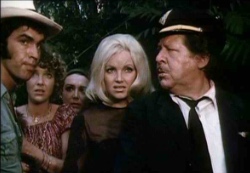 Characters are 100% recycled cardboard, with one defining characteristic — okay, maybe two, tops — to define them. They include a fey man (Antonio de Cabo, Franco’s Devil Hunter) with a tiny dog named Pepito, a grown Austrian woman (Gila von Weitershausen, Trenchcoat) forever clutching a teddy bear, a hot Spanish woman with built-in floatation devices (Esperanza Roy, It Happened at Nightmare Inn) and a rich American woman (Ewa Strömberg, Franco’s Vampyros Lesbos) who observes in broad daylight, “The moon is so romantic!” Earlier, right after X312’s rough landing, she says, “There have to be snakes and crocodiles, just like in the movies,” and dammit, she’s right!
Characters are 100% recycled cardboard, with one defining characteristic — okay, maybe two, tops — to define them. They include a fey man (Antonio de Cabo, Franco’s Devil Hunter) with a tiny dog named Pepito, a grown Austrian woman (Gila von Weitershausen, Trenchcoat) forever clutching a teddy bear, a hot Spanish woman with built-in floatation devices (Esperanza Roy, It Happened at Nightmare Inn) and a rich American woman (Ewa Strömberg, Franco’s Vampyros Lesbos) who observes in broad daylight, “The moon is so romantic!” Earlier, right after X312’s rough landing, she says, “There have to be snakes and crocodiles, just like in the movies,” and dammit, she’s right!
From title and setup, X312 — Flight to Hell sounds as if a sweet little disaster film awaits your eyeballs, but let’s not kid ourselves. In such a confined space as the fuselage, Franco can’t engage in his goddamn zooms, so he gets this baby on the ground as soon as allows. That makes the movie fall into the category of jungle piffle. And, once more, that’s not really a complaint. —Rod Lott

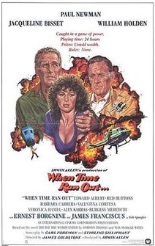

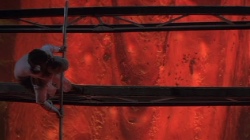
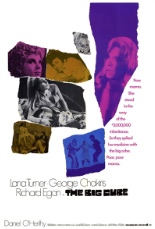
 At the curtain call of her latest play, acclaimed, yet over-the-hill stage actress Adriana Roman (played by former
At the curtain call of her latest play, acclaimed, yet over-the-hill stage actress Adriana Roman (played by former 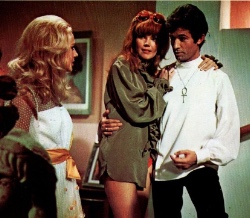
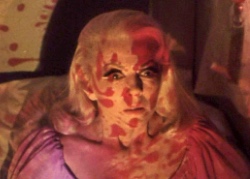
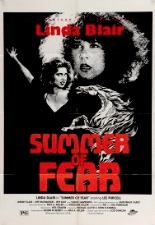
 Having delivered horror classics with his first two times at bat, Wes Craven followed up
Having delivered horror classics with his first two times at bat, Wes Craven followed up 